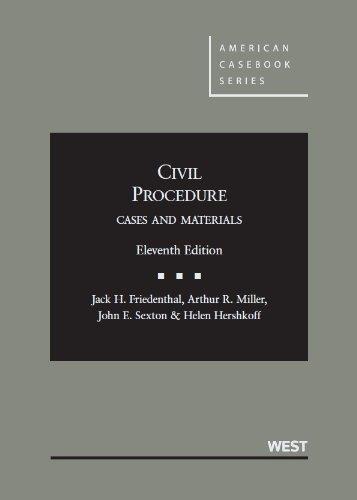1. In ALDINGER v. HOWARD, 427 U.S. 1, 96 S.Ct. 2413, 49 L.Ed.2d 276 (1976), a Washington...
Question:
1. In ALDINGER v. HOWARD, 427 U.S. 1, 96 S.Ct. 2413, 49 L.Ed.2d 276 (1976), a Washington State citizen brought a federal civil rights action under 42 U.S.C. § 1983 against several state officials; jurisdiction was invoked under 28 U.S.C. § 1343(3). Plaintiff sought to join Spokane County, Washington as an additional defendant, but under the then-prevailing construction of the civil rights statute, counties were not liable under it.c Therefore, plaintiff sued the county under state law. Although the new claim arose from a “common nucleus of operative fact” as the federal civil rights claim, and so satisfied Gibbs, the Supreme Court held that pendent jurisdiction could not be exercised:
325
* * * From a purely factual point of view, it is one thing to authorize two parties, already present in federal court by virtue of a case over which the court has jurisdiction, to litigate in addition to their federal claim a state-law claim over which there is no independent basis of federal jurisdiction. But it is quite another thing to permit a plaintiff, who has asserted a claim against one defendant with respect to which there is federal jurisdiction, to join an entirely different defendant on the basis of a state-law claim over which there is no independent basis of federal jurisdiction, simply because his claim against the first defendant and his claim against the second defendant “derive from a common nucleus of operative fact.” * * * True, the same considerations of judicial economy would be served *
* *. But the addition of a completely new party would run counter to the well-established principle that federal courts, as opposed to state trial courts of general jurisdiction, are courts of limited jurisdiction marked out by Congress. * * *
Step by Step Answer:

Civil Procedure Cases And Materials
ISBN: 9780314280169
11th Edition
Authors: Jack Friedenthal, Arthur Miller, John Sexton, Helen Hershkoff






